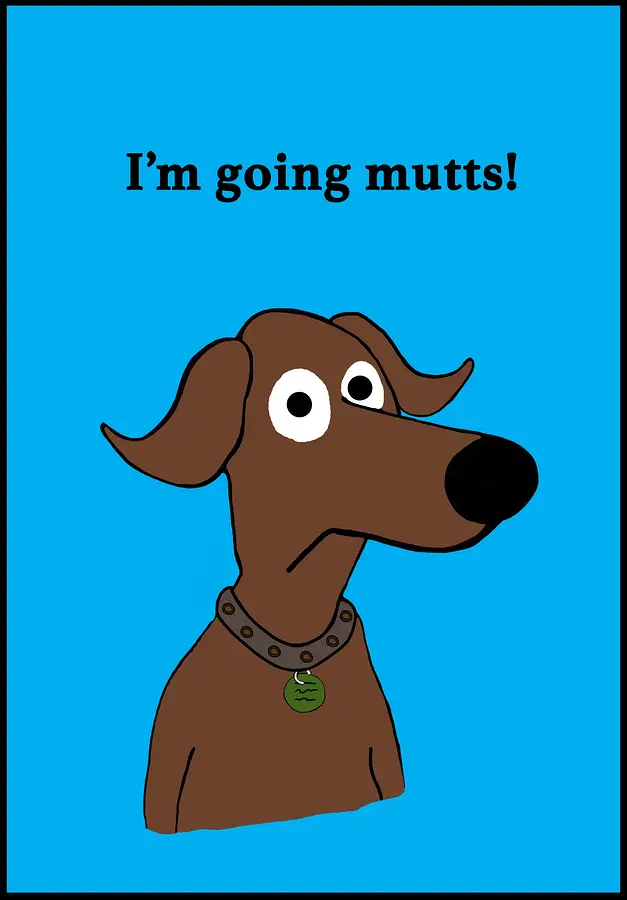
Do you ever find your dog highly uncomfortable and panicky when you’re leaving the house? Is he overly excited once you walk through the door? While you were away, did he turn the house upside, clawing and destroying everything within sight? Yes? Chances are your dog could have separation anxiety.
Before we get into it, it’s worth noting that this is going to be quite a long read. If you do not have the time to read through the whole article, use the table of content to get to the “Conclusion”. There, we give a quick summary of everything within this article.
Table of Contents
What Is Dog Separation Anxiety?
Dog separation anxiety is a type of distress noticed in dogs who are left alone. It often happens to dogs who are very attached to their owners, or dogs who have had some form of trauma in the past where they were left by their owners.
This reaction is a lot more than whining and a little bit of mischief, it is a full mental breakdown which your dog goes through as you’re about going out, and when you finally leave. Most of the time, it gets really bad that many dog parents give their dogs out for adoption because they cannot deal with it anymore.
However, if you have the proper knowledge, dog separation anxiety can be maintained and controlled. With that said, let’s look at the causes of dog separation anxiety.
Causes- Dog Separation Anxiety
The actual cause of dog separation anxiety is not clear to many dog researchers, as well as, veterinarians. However, many believe that while some dogs can develop separation anxiety because of some encounters, others are naturally predisposed to it genetically.
Genetics
Without a doubt, a dog’s genetic predisposition will have a great effect as to whether he has separation anxiety or not(source). Although predisposed to it, he might not fully show the symptoms until one of the scenarios we’ll talk about below happens.
With that said, here are 12 dog breeds that are more likely to have separation anxiety because of their genetic predisposition to it (source):
Dog Breeds More Likely To Have Separation Anxiety
-
Labrador Retriever
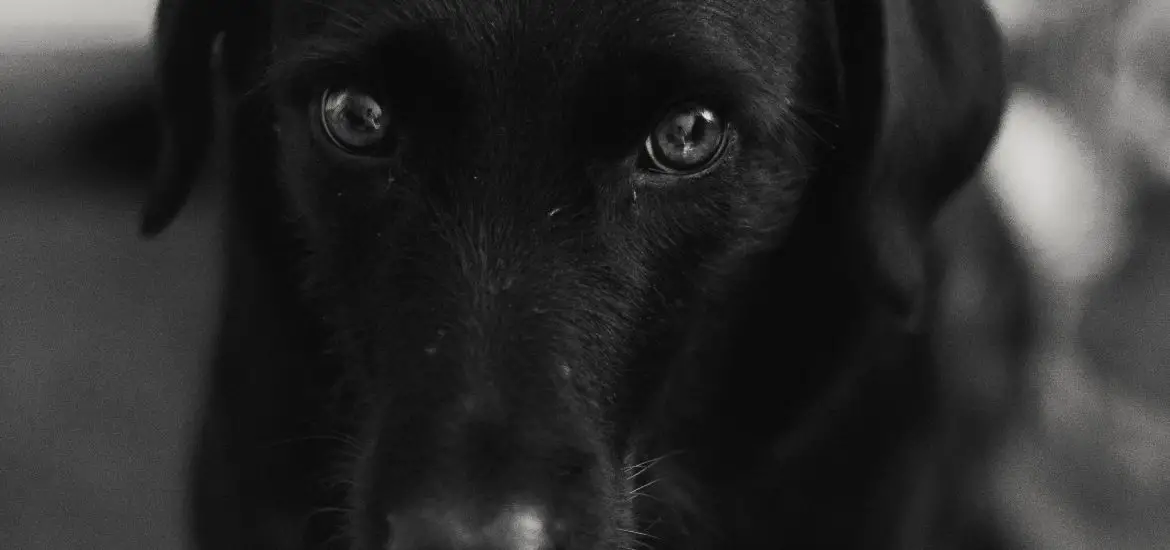
Although a very great companion and a beautiful dog, the Labrador retriever has recently begun to decline in both temperament and health. This is why they are more predisposed to separation anxiety, as well as, other behavioral issues.
The Labrador retriever is most people’s choice for a family pet because of how naturally relaxed and very social they are. However, them being so social becomes a problem as they don’t take being alone well.
-
Border Collie

An extremely intelligent dog breed, border collies are ranked as the smartest dog breed by Ceasar Milan (source). Because they are so intelligent, border collies get easily bored if they are not constantly mentally stimulated.
So, it’s easy to see how they can develop anxiety when you’re not available to keep them active and mentally stimulated.
-
Cavalier King Charles Spaniels
These dogs are called “companion dogs”. That should already tell you at least half of the story. They are bred to enjoy the companionship of their parents. So, it shouldn’t come as a surprise to you when they don’t know how to act when you’re not there.
Apart from separation anxiety, this breed is just more anxious generally. This general anxiety can lead to behavioral problems such as, barking, chewing, and so on, even while you are around.
-
Jack Russell Terrier
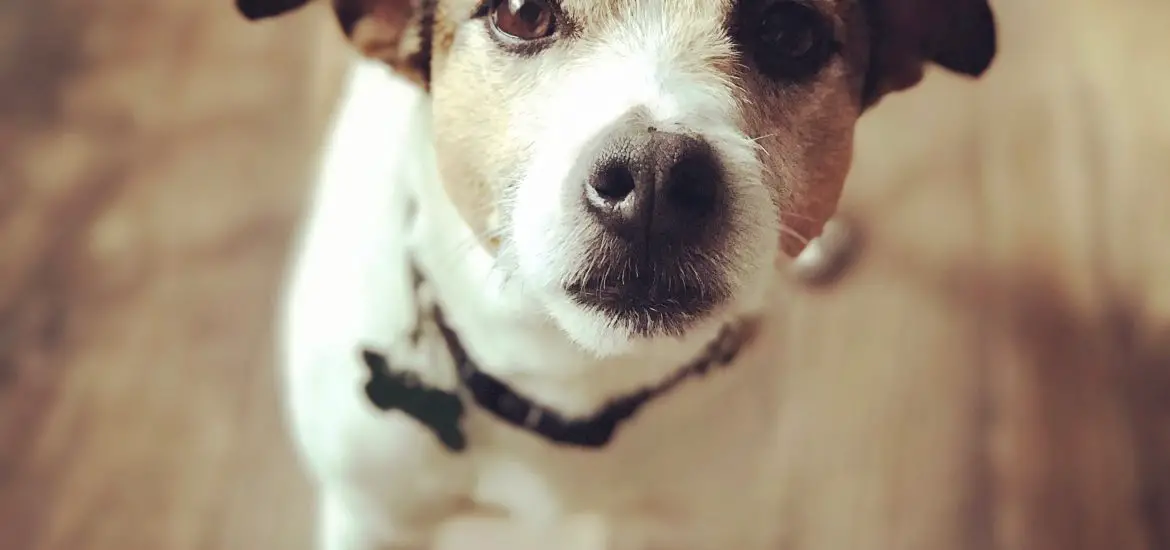
Because of how energetic these dogs are, they need constant physical activity and entertainment. Just like the Border Collie’s that need mental stimulation, Jack Russell Terrier need physical stimulation. In the absence of that, when you’re away, they can get very distressed and uneasy.
For such a small breed, these dogs can cause a significant amount of damage because of how athletic and energetic they are.
-
German Shepherd

German shepherds are naturally working dogs. They thrive in an environment that is both physically, as well as, mentally stimulating. So, being left alone with nothing to do can easily cause them to develop separation anxiety.
Like the Labrador retriever on this list, German shepherds have experienced various health challenges in recent times. These challenges add to their predisposition to separation anxiety.
-
Australian Shepherd
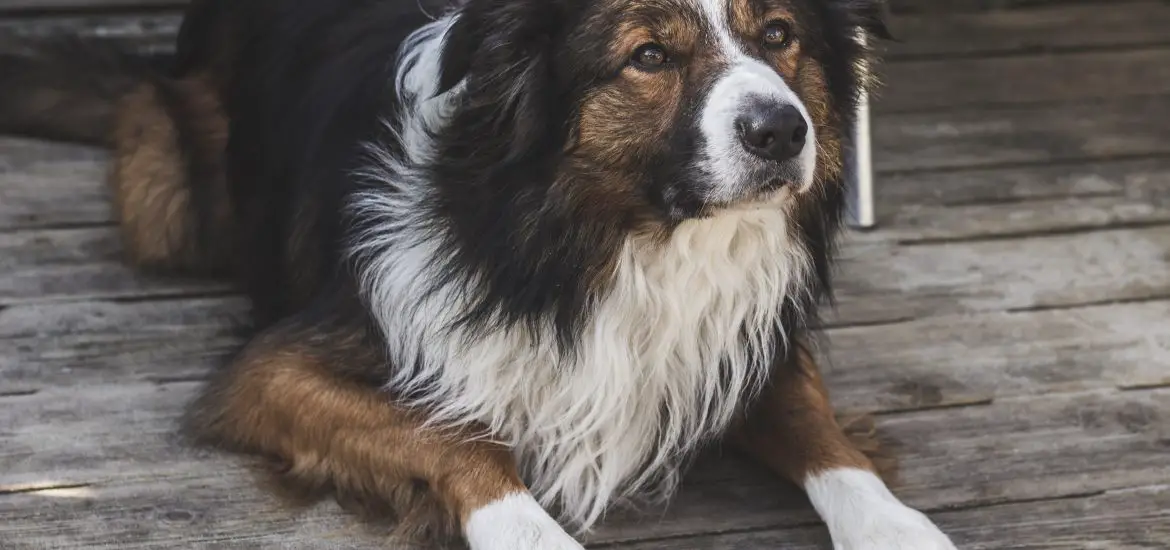
Just like their European cousins, Australian shepherds are working dogs. They are very active dogs that are at their best when they are herding or performing other similar tasks. Being left alone without anything to do can cause these dogs to develop separation anxiety.
-
Bichon Frise
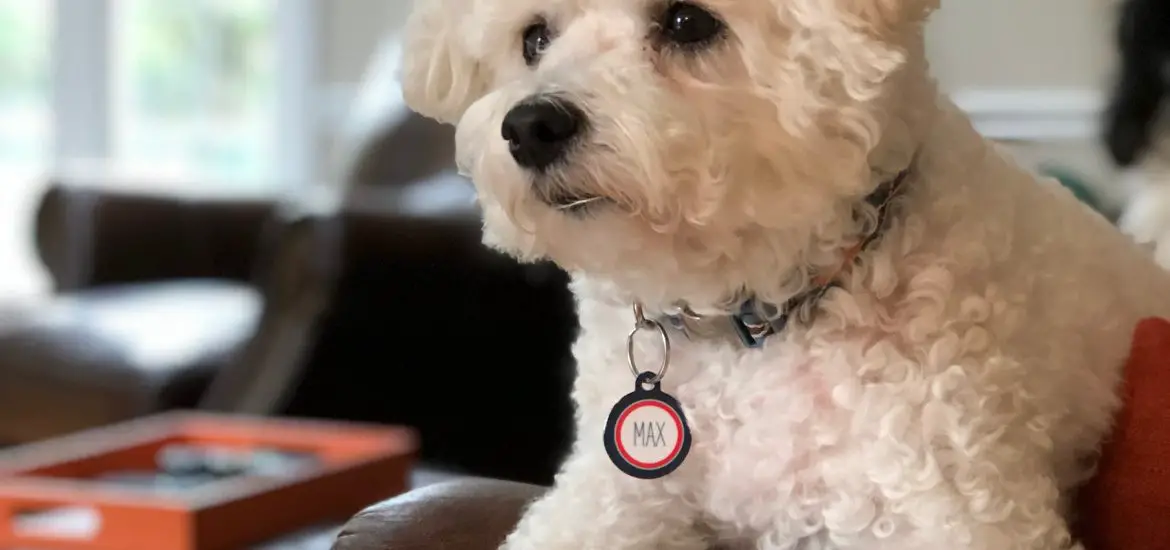
Like the Cavalier King Charles Spaniels, the Bichon Frise is bred as a companion dog. So, they act best when they are together with family members. When left alone, they can get very bored, and as such, become very bored and suffer distress as a result of loneliness.
-
Vizsla
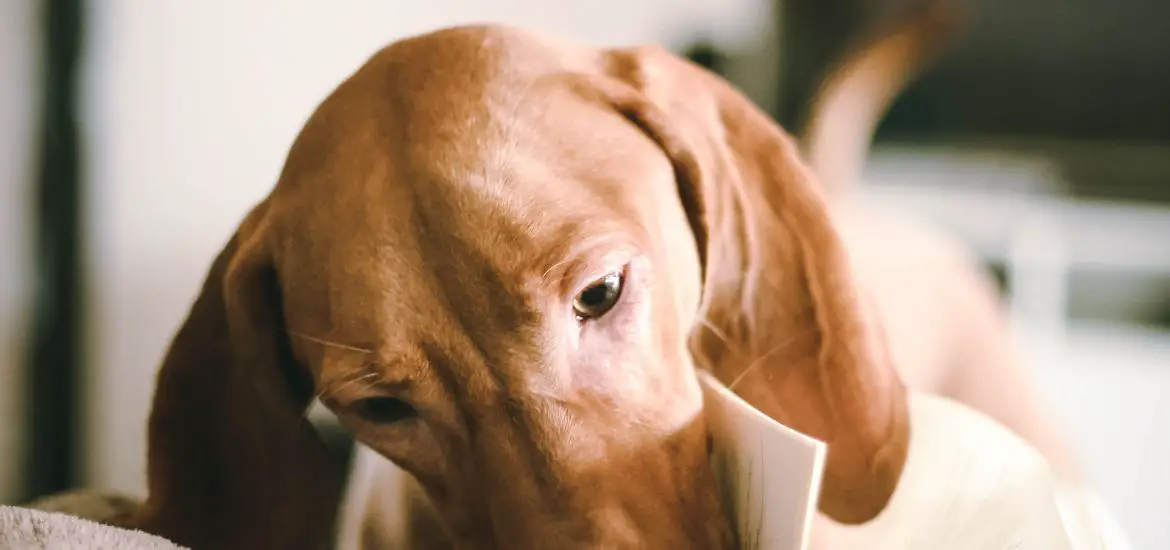
Vizslas are hunting dogs who are bred to hunt with humans. One, because they are hunting dogs they are very active and don’t cope well with boredom. Two, they are also very social dogs, and so, they don’t cope well when left without any company.
-
German Shorthaired Pointer
Just like vizslas, German shorthaired pointers are made as hunting dogs to hunt with their human companions. Due to the fact that they’ve been bred to always be around people and activities, they easily get bored when they are alone, which leads to separation anxiety.
-
Toy Poodle
This breed of poodles, known for its gentle temperament, is also bred as a companion dog. Therefore, they need enough time, love, and attention from their human companions. Naturally, whenever they don’t get this, they could present symptoms of separation anxiety.
-
Havanese
Like the toy poodle, the Havanese is a small pooch that makes a great family companion. Its origins are in Cuba. They are bred as lap dogs, and as such, they always want human companionship. Because of that, they don’t do well when they are left alone for a long period of time.
-
Italian Greyhound
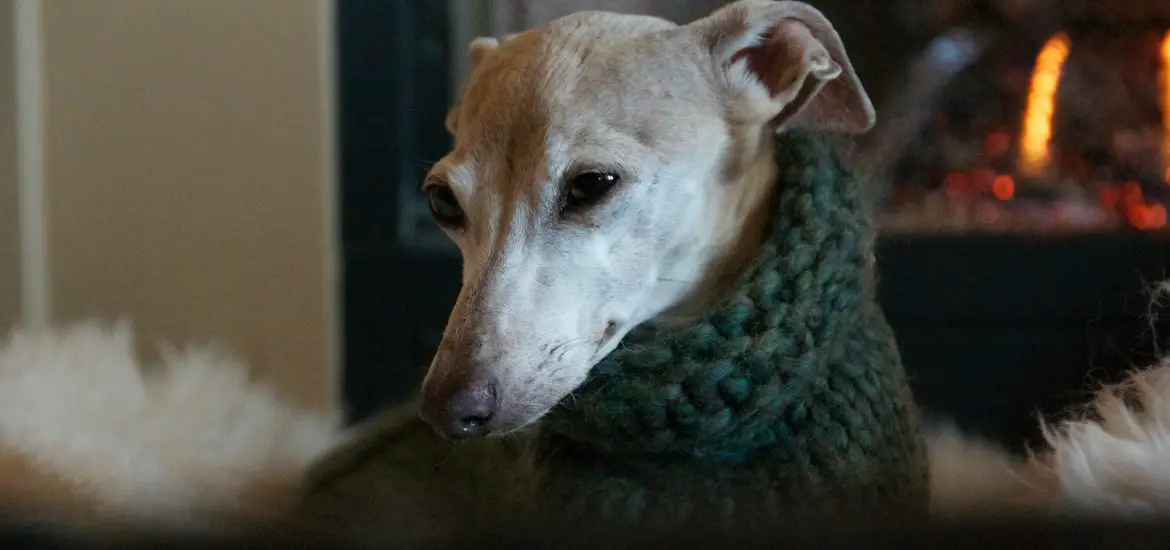
Italian Greyhounds are very small sighthounds, the smallest of all sighthounds. Also, they make great family companions, more especially for Italian greyhounds that are not very active. They bond very closely with their human family which makes it difficult for them to stay alone.
Scenarios That Can Cause Separation Anxiety
Here are a few scenarios that might trigger separation anxiety in a dog who isn’t genetically predisposed to it (source).
Leaving Him Alone After He Has Been Used to Being With People For A Long Time
If your dog is very clingy to your family and your family is always around, when you guys finally leave, it might be difficult for him to adjust to being alone.
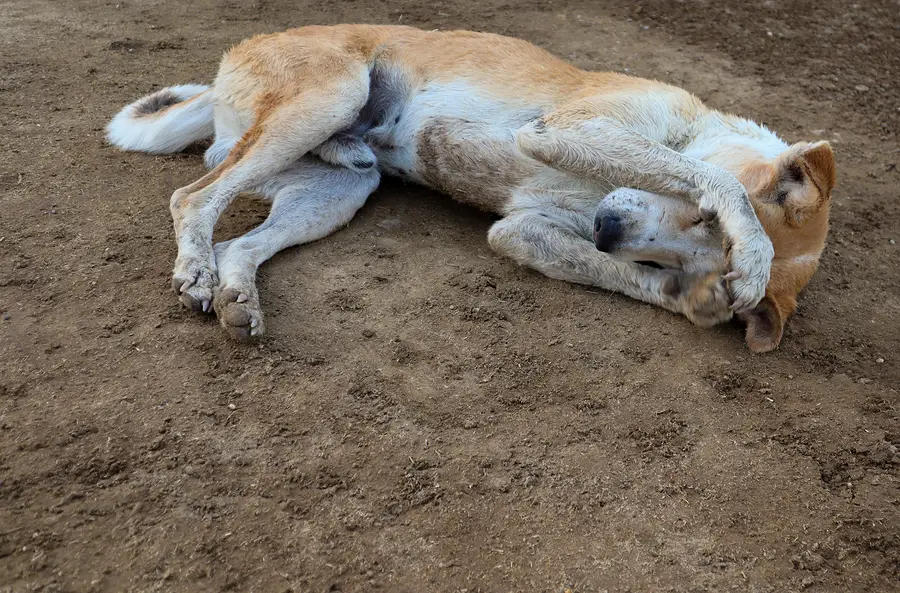
Change Of Family Or Guardian
Switching parents, family members, or guardians might have a long term effect on your dog. Things like moving from a shelter to a new home might trigger dog separation anxiety.
Change in Family Schedule
If there is an abrupt change in the family schedule that your dog is already used to, it can cause your dog to develop separation anxiety. For example, if the amount of time you spend out with your dog alone suddenly doubles in one day, the uncertainty can cause your dog to develop separation anxiety.
Moving
Moving to a new home, in a new environment, can trigger separation anxiety in your pooch.
Death Or Sudden Absence Of A Family Member
If a dog’s human companion suddenly passes on or travels for a long period of time, that absence can leave a void in the dog’s heart. That void and feeling of loneliness can trigger separation anxiety in your dog.
Let’s Break Down Some Misconceptions
Because dog separation anxiety is not a topic that people have absolute knowledge about, it is easy for people to develop misconceptions surrounding it. In this section, we would be dealing with those misconceptions.
It Is Your Fault
We’ve seen some dog parents who feel very bad about themselves after their dog develops separation anxiety. They feel like maybe they pampered the dog too much, didn’t let them associate enough with other puppies at a young age, and other things like that.
While excessively pampering and limited socialization has a slight chance of triggering separation anxiety, as we’ve seen above, it’s mostly genetic. So, it is not your fault. You don’t need to bear that burden anymore. However, you definitely can do something to, at least, ease the pain.
It Is Your Dog’s Fault
Another thing you’ll need to keep in mind concerning separation anxiety is that it’s not your dog’s fault. Some people have the belief that separation anxiety is simply your dog exhibiting bad behavior, or him not being properly home-trained.
This is because there is a thin line between your dog exhibiting bad behavior and separation anxiety. Sometimes, he’s not being a “bad dog” he’s just in distress and wants you to come home. The anxiety is what causes them to act up and most times, they don’t really know what they’re doing.
Allowing Your Dog Sleep With You Causes Separation Anxiety
Some dog trainers advise dog parents that they should not allow their dogs to sleep on the same bed with them. Reason being that that level of closeness could make their dogs so fond of them that they don’t know how to act when they are alone. Logical, right?
However, according to a study carried out by Gerrard Flannigan, and Nicholas H. Dodman in 2001, it was expressly concluded, that “there was no association between separation anxiety and spoiling activities, such as letting your pooch sleep on your bed” (source).
One thing you must note, however, is that while this won’t necessarily trigger separation anxiety, it won’t help if your dog already has it. If your dog already has separation anxiety, allowing him to sleep on your bed would make him associate comfort with your presence. That definitely would not help his separation anxiety, not one bit.
Once Your Dog Destroys Things While You’re Away, He Has Separation Anxiety
Some people are of the opinion that once your dog chews a piece of shoe or some socks while you’re away, then he definitely has separation anxiety. Most of the time, that is not true. Yes, destroying stuff is the most noticeable symptom of separation anxiety. Still, destroying stuff isn’t always separation anxiety.
Your dog could be destroying things for other reasons including- boredom, lack of training, and being without enough physical stimulation.
When it’s separation anxiety, this destruction is often targeted at the dog owner’s personal belongings because of the owner’s scent. It is also targeted around windows or doors from where the pet saw their companion leaving.
Of course, destruction of other properties might occur but the point we are trying to make is that destruction alone shouldn’t be described as separation anxiety. It needs to be checked out as part of a whole, just like every other symptom, and not singled out alone.
Simple Solution- Get Another Dog!
Some people believe that a problem as serious as separation anxiety can easily be solved by simply getting another dog. The rationale is that “with another dog around, he’ll have a friend to play with, so he won’t be lonely”.
While that rationale is sound, it only works in the circumstance that the dog simply doesn’t like to be left alone. If that is the case for your pooch, then you’re in luck, simply having another dog will do the trick.
However, for many dogs with separation anxiety, that is not the case, sadly. In fact, the anxiety is caused not from being alone, but from being separated from a particular family member. If that is the case, “just another body” won’t do the trick. Your dog would still chew everything to bits while his furry friend sits and watches, or maybe even joins in to make a bigger mess.
Our advice – if you were already looking at getting a second pooch, then it’s fine. Get the second pooch and if that doesn’t solve it for your dog, you can check the other methods of treatments which we would soon see.
On the other hand, if you simply wanted to get the second pooch to cure the separation anxiety of the first, then we advise that you experiment the idea first. Get another dog, maybe from a friend, and then leave them alone while you’re away. The result will tell you whether that’s the solution, or you should look for another.
Ignore Him While You’re At Home
This one stems from the age-old myth that you should ignore your dog for 10 minutes, before you leave, and after you return. The rationale is that it would reduce your dog’s emotional peaks and falls associated with you being around and you being away.
Let us paint you another scenario – imagine your partner suddenly started ignoring you while they were around. They walk through the door and there is zero excitement on their face when they see you. Won’t you believe that you’ve done something wrong? Won’t that increase your anxiety? Exactly.
That’s what this does, the exact opposite. Because dogs are very observant, they can easily tell when you’re ignoring them. This would heighten the anxiety, which is something you definitely do not want.
Symptoms- Dog Separation Anxiety
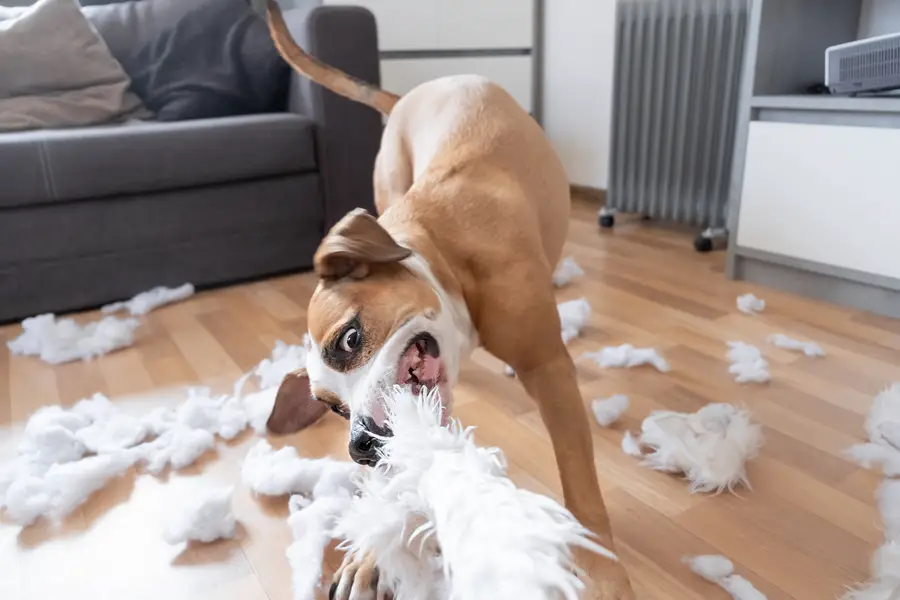
Now that we’ve broken down all the misconceptions surrounding dog separation anxiety, let’s look at the symptoms. Just like we mentioned when we talked about destruction, some of these symptoms might be caused by something else.
So, when you see these symptoms, do not conclude. Instead, take your pooch to a vet for a proper diagnosis. Without further ado, let’s look at the symptoms of separation anxiety (source).
Chewing
Dogs who have separation anxiety tend to chew on the personal belongings of their companions. Because the scent of their owner comforts them, they would often attack belongings that have personal scents on them like their socks, clothes, and so on.
Scratching
Another symptom of separation anxiety in dogs is the scratching of windows and doors. Basically places they’ve seen their companion go out or come in from.
Pooping And Urinating
If your dog has been house-trained but still poos and urinates inside the house, especially only when you’re not around, chances are that he has separation anxiety. This should not be confused with dogs who are not house-trained and are simply exhibiting bad potty behavior.
Drooling, Panting, and Salivation
If your dog drools, pants, or salivates in an excessive manner, such as is not noticed when you’re around, you need to take him to a vet. He might just have separation anxiety.
Howling, Barking, and Excessive Whining
If your neighbors always complain of your dogs’ loud barking, howling, or whining when you’re not around, chances are that he might be using that to expend his distress.
Other Symptoms Include-
- Pacing in an obsessive manner.
- Always violently trying to escape, sometimes to the point of mutilating themselves.
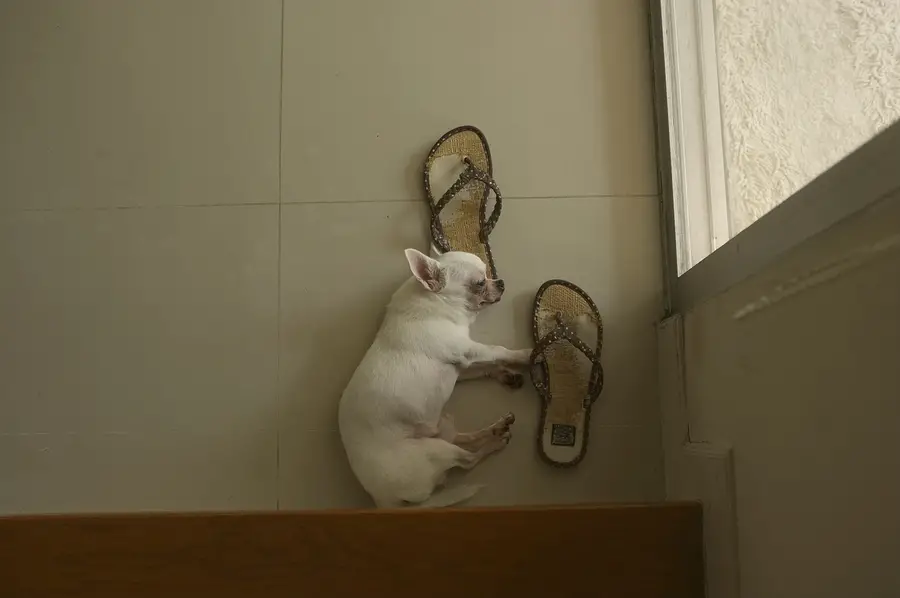
Prevention- Dog Separation Anxiety
Now that we’ve mentioned plainly that ignoring the dog before you leave and after you return does not help prevent or cure separation anxiety, let’s look at some practical steps that will help (source).
Play It Cool
One thing that can really help prevent separation anxiety is you “playing it cool”. This means removing every sign or cue that your dog can associate with you leaving the house.
If those cues are present, your dog will associate them with you leaving and would immediately begin to get anxious when those cues are played back. For example, if you always pet him vigorously immediately before you leave, you can move the ritual slightly earlier so he doesn’t associate that behavior to your departure.

Keep Him Distracted
Instead of allowing your dog have an emotional meltdown as you’re leaving (him whining and following you all the way to the dog), get him something else to do.
Before you leave the house, get your dog engaged with an interesting activity. You can give him his favorite chew toy to play within another room, or perhaps a toy that dispenses treats that he has to run around and grab. Any activity that would keep him distracted and not have to see you leave, is a great idea.
The Crate Shouldn’t Be Associated With Loneliness
One reason why many dogs do not like being left in a crate when their family is out is that they have associated being in their crate with their family’s absence. So, they feel like they are being punished when they are put in their crate.
This should not be the case. To change this behavior, we advise that you keep your dog in his crate for 10 to 15 minutes, while the family is around. That way, he doesn’t associate the crate with loneliness or your family’s absence.
Make Leaving Fun
Right now, your dog seeing you leave is not a fun experience. However, you can make it so. How? By associating your departure with something fun. For example, he could have a special treat he loves every time you are about to leave the house.
That way, instead of being anxious about your departure, he would be excited about it. Because it would come with the treats he loves.
Treatment- Dog Separation Anxiety
If your dog has already been diagnosed with separation anxiety, no need to panic, there is still hope. We’ll be discussing these treatments in two parts. The first part is if the condition is mild, and the second part if the condition is more severe.
Treatment For Mild Dog Separation Anxiety
If your dog’s separation anxiety is only mild, then you’re in luck. We say that because it would be really easy for you to get him out of it. Most of the time, all you need to do is to counter-condition him.
According to the Animal Humane Society, “counterconditioning” is the treatment process aimed at replacing your dog’s reaction that is filled with fear, anxiety, and aggression to a reaction that is more calm, pleasant, and relaxed (source). It is done by associating an unpleasant sight, sound, or event with something your pooch loves.
After a period of time, your dog begins to lose his fear for that particular event as he starts seeing them as a prediction of the things he loves. When used as a treatment for separation anxiety, counterconditioning is focused on creating an association between being alone and good things.
These good things can range from delicious food, his favorite toy, some treats, and so on. To create this association, you would need to give your pooch that one thing you know he loves every time, as you are about to leave the house.
For example, you can place a delicious food or treat inside a puzzle toy. That way, your dog is left busy with his food for 20 to 30 minutes after you’ve just left him. If it’s a mild case of separation anxiety, he would easily forget being left alone and even look forward to getting his delicious treat every time you’re away. One thing you must note, though, is to remove all the special treats when you’re home so he only has accessed them to them when he’s alone.
Treatment For Moderate Or Severe Dog Separation Anxiety
For moderate and severe cases, a basic counterconditioning program just won’t do the trick. A more complex counterconditioning program, as well as, desensitization is required (source). In this scenario, simply leaving a treat, upping, and leaving won’t do the trick.
Counterconditioning And Desensitization- Treatment For Dog Separation Anxiety
Be Very Patient
Counterconditioning and desensitization is a very complex program and as such, should be carried out with maximum care. In fact, it must be carried out so slowly and gently that the behavior never occurs throughout the training.
You would need to be very patient as it would take a long process. Initially, you would have to start with leaving for pooch alone for very short periods of time. You can start with leaving him alone for 10-15 seconds, telling him to “wait” and then reappearing. Always making sure that you do not make a big fuss over your appearance or disappearance.
Find Out What Exactly Is Causing It
You would need to be patient enough to find out what exactly is triggering the separation anxiety in your dog. For example, Fido might start to panic at the sound of your keys, or the sight of you wearing your shoes, or the sound of the door slamming shut. This is because that is what Fido has associated with you leaving.
Arrange The Different Stimuli In Order Of Negative Reaction From Least To Most
Once you have gotten the different things that cause your dog to panic, you’ll need to rank them in order of the reaction that your dog gives to that particular stimulus.
Using the example of “Hero” above, let’s say the sound of your keys get the least reaction from him while hearing the door slam shut causing him to go nuts. You would need to create a list of all the stimuli, listing “sound of keys” as the first item, and “door slam” as the last item. Understood? Great. Let’s proceed.
Start With The Mildest Things
Now that you know what stimuli produces what level of reaction in your pooch, you would need to start your counterconditioning from the one that produces the least reaction. In the case of your Fido, you would need to start with the sound of the keys.
Craft Ways To Make Each Stimulus Less Intense
Since we’re starting with the sound of your keys jangling, you would need to find a way to make the sound of the keys less intense. This can mean making a noise with the keys and stopping it before he gets the chance to have a reaction, or perhaps shaking the keys in another room so the sound is milder.
You can also begin to dissociate that sound with you leaving by shaking the keys and then going to sit down. Little by little, you would begin to notice that your dog doesn’t give a reaction to that particular action anymore.
Pair Each Level With A Positive End Result
This one we’ve talked about with the basic counterconditioning concept. You would need to make him associate these actions (sounds of keys jangling), with a positive outcome. This can be tangibles like food, treats, or a special toy. Or, it can be social positive reinforcements like praising, attention, and petting. (who’s a good boy? Yes, you are. Yes, you are).
If you’ve chosen food as your positive outcome, it should only be given in small doses. We don’t want him to finish the training obese. You would also need to try out different foods to find out that one that your dog loves the most.
Don’t Move On To The Next Step Until The First One Is Completed
We cannot over-emphasize this. Patience is the key. Do not move on to the next level of stimuli until you can see that your dog has doesn’t have a reaction to the present one. In fact, a good way to judge is to watch for when he starts anticipating the positive outcome, rather than getting anxious.
There is no specific time period for this training. It entirely depends on your pet and the level of his separation anxiety. So for the last time, you’ll need to be patient. Don’t expect drastic changes. Instead, watch for the mild, gradual changes. It’s a very long process but if done correctly, can produce tremendous results.
While you’re undergoing this process, if you can, stay home. That way, you don’t trigger the anxiety during the process, it’s not advisable. Also, you might need a Gentle Leader Collar to help with the training, and some anti-anxiety medication, which leads us to our next section.
Medication- Dog Separation Anxiety
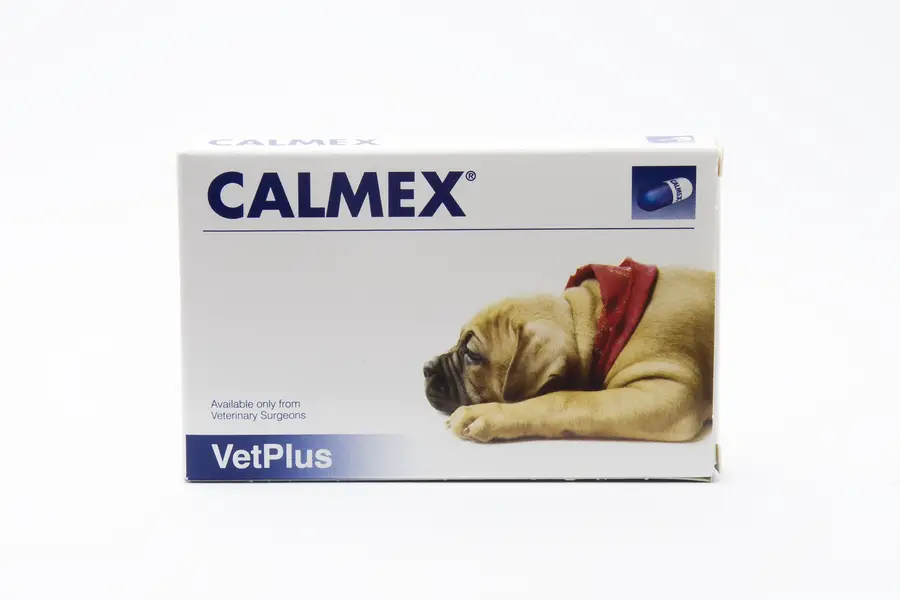
Before we dive into it, it must be pointed out that medication alone will not do the trick. It must be paired with the counterconditioning and desensitization that we just finished talking about.
Diving straight into it, here are 10 of the most prescribed anti-anxiety medications used to treat separation anxiety in dogs (source).
Anti-anxiety Medications
Alprazolam (Xanax)
This is used for dogs who get anxious over certain situations. Most often, it is prescribed for dogs who get anxious during a thunderstorm. But since it’s situational anxiety, it can easily be used for separation anxiety as that in itself is a “situation”.
As a member of the benzodiazepine class of sedatives, Xanax depresses the activity of certain parts of the CNS (central nervous system). It can also be used as a sedative or as a muscle relaxer. It is best administered at the early stages of anxiety and comes in a tablet form.
Amitriptyline
Unlike Xanax, this medication is more specialized for separation anxiety. It is given to dogs who have separation anxiety, as well as, other general anxiety problems.
It is an antidepressant that works by increasing the neurotransmitters that affect mood. Amitriptyline comes in tablet form and can be given with or without food.
Warning- Dogs should gradually be taken off the medicine after about two weeks.
Dogs with diabetes should not use this.
Buspirone
This medication works for general anxiety in dogs. It is given to dogs who get anxious in various social situations. For it to be effective, Buspirone needs to be used constantly. So, this won’t work with anxiety caused by things like thunderstorms because they are not regular.
This medication is also given in tablet form and can be administered without food.
Clomipramine (Clomicalm)
It’s used for both separation anxiety and for situational anxiety.
This is the first medication that is FDA-approved as a treatment for dogs with separation anxiety. Although, it can also be administered for different kinds of anxieties.
It’s an antidepressant that works like “amitriptyline”. You need to use this for a couple of weeks for you to notice the therapeutic effect. In fact, you would need to have used this medicine for your pooch for at least 2 months, before you can determine whether it’s good for your pooch or not.
Just like the other medicines we’ve talked about, this is given in tablet form and can be given with food, or without food.
Dexmedetomidine (Sileo)
This works for different types of anxieties like- noise-induced anxiety, phobias, as well as, aversions.
This is another drug that has been approved by the FDA. However, this one has been approved mainly to help dogs that have noise aversion. This drug basically works by depressing the activities of certain areas of the brain. This leads to a reduction in your dog’s anxiety level.
Sileo is best administered at the earliest signs of anxiety in the dog. Or before the noise that triggers his anxiety occurs (if he gets anxious during a thunderstorm, for example).
This drug is given as a transmucosal gel inside a multidose tube. It should never be swallowed. It should be applied on the cheeks and the gum. That way, it will be absorbed by the mucous membrane. Also, as a precaution, it’s advisable that you wear waterproof gloves when administering the medicine.
Diazepam (Valium)
This medicine is mainly used for situational anxiety.
While it has some other uses, it is best used as an anti-anxiety medicine, appetite stimulant seizure-control, and muscle relaxant. As used with anxiety, valium helps with panic disorders like noise aversions and phobias.
Valium should always be administered before any situation that is known to cause separation anxiety. For example, if your dog has separation anxiety, you want to give him valium before you leave the house. In a case where that is not possible, administering it at the earliest sign that anxiety is noticed would work too.
As an immediate treatment for anxiety, valium can be administered as either liquids or tablets. However, they can also be given via injections and other similar means.
Fluoxetine (Prozac)
This is yet another FDA approved the medication. It has been approved as a treatment for dog separation anxiety. Although, it can also be given for other forms of anxiety and behavioral issues not caused by separation anxiety.
For this medication to be effective, it has to be administered alongside a counterconditioning program. It’s available in tablets, liquid, and capsules.
Lorazepam (Ativan)
Just like Valium, Ativan should be given to dogs before the situation that causes them anxiety, whenever possible. When that is not possible, it should be given at the earliest sign of anxiety. Just keep in mind that it must be given at the earliest possible time, be it before or during the feeling.
As a treatment for anxiety, this drug is administered in either liquid or tablets which can be orally taken without food, or with food. However, sometimes, it can be given via other means, like injections.
Paroxetine (Paxil)
Paxil is a more general anxiety drug. It is used to treat a wide variety of anxiety-related behaviors. Some of these behaviors include- self-mutilation and aggression (both symptoms of separation anxiety). This drug can be administered either as a tablet or as a liquid. Your dog doesn’t need food to take it.
Sertraline (Zoloft)
The final medication in this lineup is Zoloft. Like Paxil, it is used for general anxiety issues, as well as, anxiety-induced behaviors. It works very well for separation anxiety, aggression that’s fear-based, and fear of thunderstorms.
It’s available in both liquid and tablets forms and can be given to your dog whether he has eaten or not. If your dog has been on this drug for more than two months, you are advised to take him off it gradually and not at once.
Calming Treats
If you feel like your pup might not be ready for full-blown medication yet, a good place to start is with some calming treats.
Another thing about treats is that it can also act as positive reinforcement for when you’re leaving. If the treat is sweet enough, your dog will look forward to it when you’re going out, and it’ll also help him calm down, medically.
Natural Remedies
If your dog does not have a severe case of separation anxiety, natural supplements might go a long way in remedying the situation. The best thing about natural remedies is that they have lesser side effects compared to medication. Although, just like medication, some natural remedies come in tablets and liquids.
If a natural remedy is something you’re willing to consider, here are our recommendations:
- Nutritional Supplements- L-theanine.
- Homeopathic Treatments- Rescue remedy made with five flowers or Anxiety Relief drops. It’s a diluted liquid.
- Pheromone therapy- It’s a version of the hormone that mothers produce while they nurse their puppies. It has a calming effect on their dog.
- Calming Aides- Calming aides such as ThunderShirt or Anxiety Wraps give a certain wrapping pressure that calms dogs.
- Purposely leave behind some of your scents. Clothes you’ve just worn, socks, any other personal belongings that hold your scent.
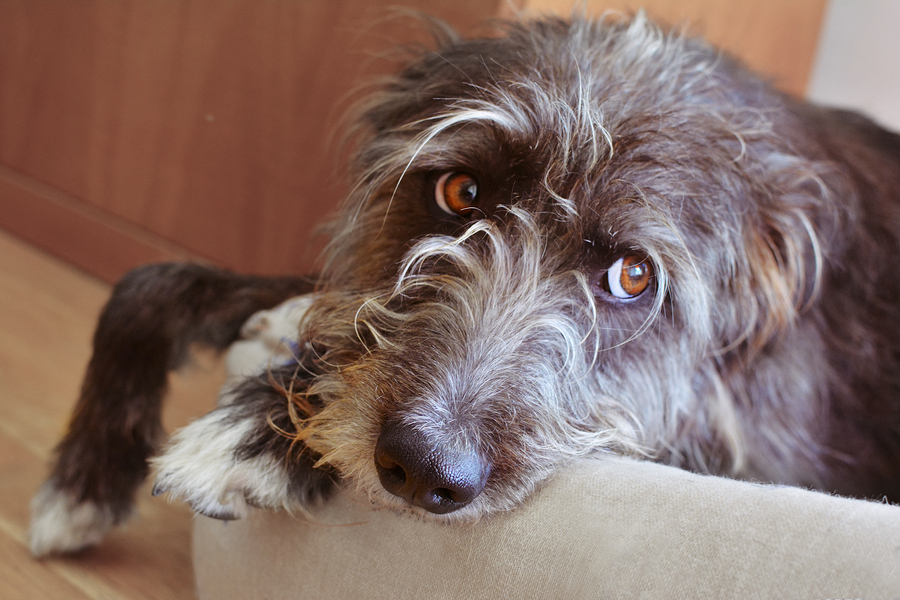
Conclusion
Whew! We’ve finally gotten to the end and boy! Has it been a long journey. Just before we leave you, we would like to do a quick summary of all the things we’ve learned so far. We would group this into two simple sections- “Dos” and “Don’ts”.
Dos
- As prevention, don’t make a big fuss about your leaving or arrival.
- Keep your dog busy and distracted while you’re leaving.
- Watch out for the symptoms- destructive behavior, chewing, pooping and urinating, and so on.
- Get a proper diagnosis from a vet.
- If it’s mild, a simple counterconditioning program and some natural remedies will do.
- If it’s severe, a more complex counterconditioning and desensitization program will be required. That takes a lot of patience to complete.
- Be patient.
- Alongside the training program, prescribed medication, as well as, some anti-anxiety treats are most welcome.
Don’ts
- Never punish your dog for having separation anxiety. It’s never his fault.
- Don’t blame yourself either. It’s not your fault.
- Never self-diagnose because he shows certain symptoms.
- Don’t ignore your dog for any reason. He knows.
Do what needs to be done, don’t what you shouldn’t, and we promise you, you and your pooch will be fine. If your dog does not have separation anxiety, take note of the preventive measures.
If you’ve found out your dog does have it, with proper care, training, medication, and of course, love from you the parent, they will definitely bounce back in due time. It might take a while, but with your help, they will overcome it. We wish you the best of luck!
